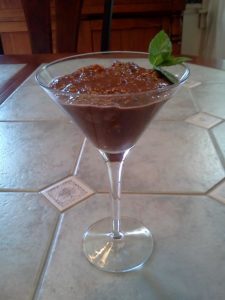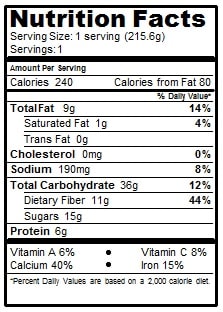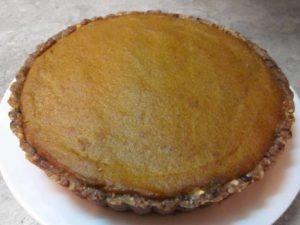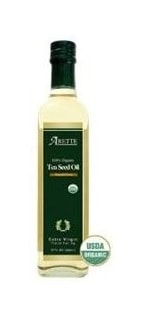Happy New Year!
How are those resolutions coming along? One week into January and most of us are still sticking to our healthy diet and exercise regimens. By the time March rolls around, of course, almost 80% of those well-intentioned plans will have been abandoned.
I think the problem is that we place far too much faith in our willpower — which, as research shows, probably won’t be enough to power you through the tough times.
This article is also available as a podcast.
=
Willpower: A Limited Resource?
According to researchers Roy Baumeister and Kathleen Vohs, most of us have a relatively limited supply of willpower. When we call on our willpower to help us resist a temptation, we actually deplete our reserves, leaving us less able to resist the next temptation. Not only that, but the mental energy we spend exercising our willpower drains our capacity to perform other cognitive tasks!
Let’s say, for example, that you show up at your weekly staff meeting to find that Linda has brought a batch of her famous homemade chocolate chip cookies. The cookies smell delicious and you know from previous experience that they taste every bit as good as they look and smell. Nonetheless, you’re determined to stick to your resolution to avoid sweets. Ninety minutes later, the meeting is finally over and you’ve made it through without a single cookie! Good for you!
Unfortunately, the effort it took to NOT eat those cookies during the meeting made you less able to concentrate, problem-solve, and contribute at the meeting. And then, on your way out of the conference room, you walk by a bowl of chocolates that someone left on the counter. They’re not even particularly good chocolates–nowhere near as tempting as Linda’s cookies. But the fact that you have just spent 90 minutes resisting those cookies actually makes it more likely that you’ll succumb to those cheap chocolates.
Oh, the humanity!
Strength Training for Your Willpower
Some psychologists argue that willpower is a bit like a muscle. When it’s asked to do some heavy lifting, your willpower can become fatigued, just like your bicep gets tired after too many curls,
However, just as you can gradually build up your bicep with strength training, you can also increase your willpower by exercising it. Baumeister believes that you can strengthen your willpower by consciously doing things that are contrary your usual habits — such as brushing your teeth with the opposite hand or driving a different route to work.
Carol Dweck, from Stanford University, on the other hand, thinks that the idea of willpower as a limited commodity becomes a self-fulfilling prophecy. When subjects are primed to think of willpower as a renewable, self-replenishing resource, they seem to have more of it.
Just as you can build up your bicep with strength training, you can also increase your willpower by exercising it.
Personally, I think that the truth lies somewhere in between. Some people seem to have greater reserves of willpower than others. This may be due to nature, nurture, or a bit of both. And I don’t doubt that willpower can be enhanced with the right kind of training — at least to a certain extent.
Nonetheless, instead of relying entirely or mostly on willpower, I think makes sense to supplement our resolve with other strategies to increase our chances of success.
3Tricks for the Willpower Challenged
Trick #1: Engineer your environment to remove temptation
Don’t use up valuable willpower resisting those Oreos and potato chips in the cupboard. If you don’t want to eat it, don’t bring it into the house. If you must have it in the house, put it in a cupboard or closet that is out of sight and difficult to reach. If, after all that, you decide to indulge, serve yourself a single portion into a small bowl and put the rest away. Most people think that they are far too smart for these sorts of simplistic things to make a difference. But study after study demonstrates that they work.
For more on engineering your environment for success, see my episode on Why We Overeat.
Trick #2: Use positive redirection
Anyone who has ever spent time with a 2-year-old knows the power of positive redirection. Instead of telling a toddler to stop pulling the cat’s tail, you distract him with a different toy or activity. And, let’s face it, when it comes to changing our eating habits, most of us are operating on the level of a 2-year-old. So instead of obsessing about what you’re trying not to eat, focus on things you’d like to eat more of.
For more on positive redirection, see my article Shift Your Focus to Make Dieting Easier
Trick #3: Keep it simple
For some reason, when we make up our mind to lose weight or get in shape, we’re often attracted to complicated regimens that have lots of very specific rules and requirements. Subconsciously, we seem to believe that the more elaborate the program — and the bigger the departure from our current habits — the more likely it is to be the one that finally works.
This is a trap.
The more complicated the diet, the bigger the departure from our normal routine, the more rules and restrictions there are and the more decisions we’re required to make, the more likely we are to crash and burn. If you want to make it stick, keep it simple.
Originally published at QuickandDirtytips.com





